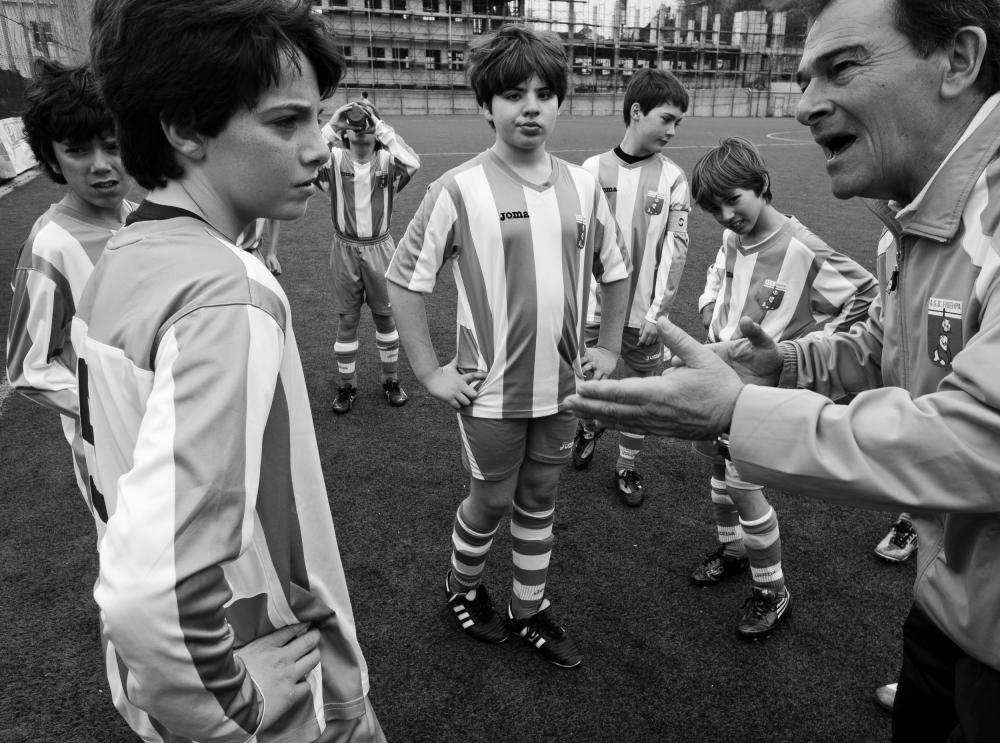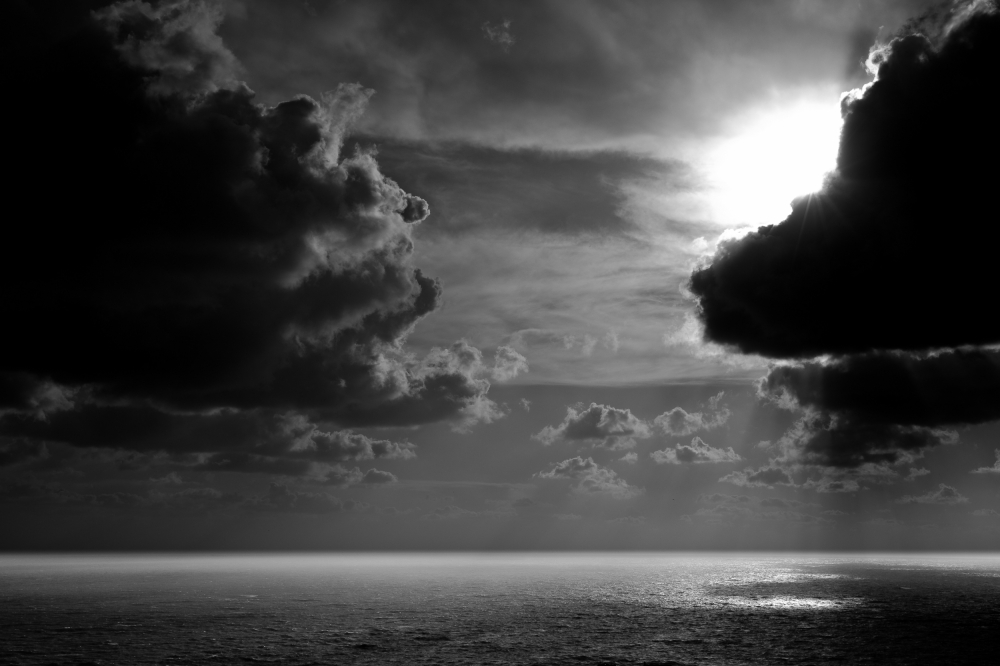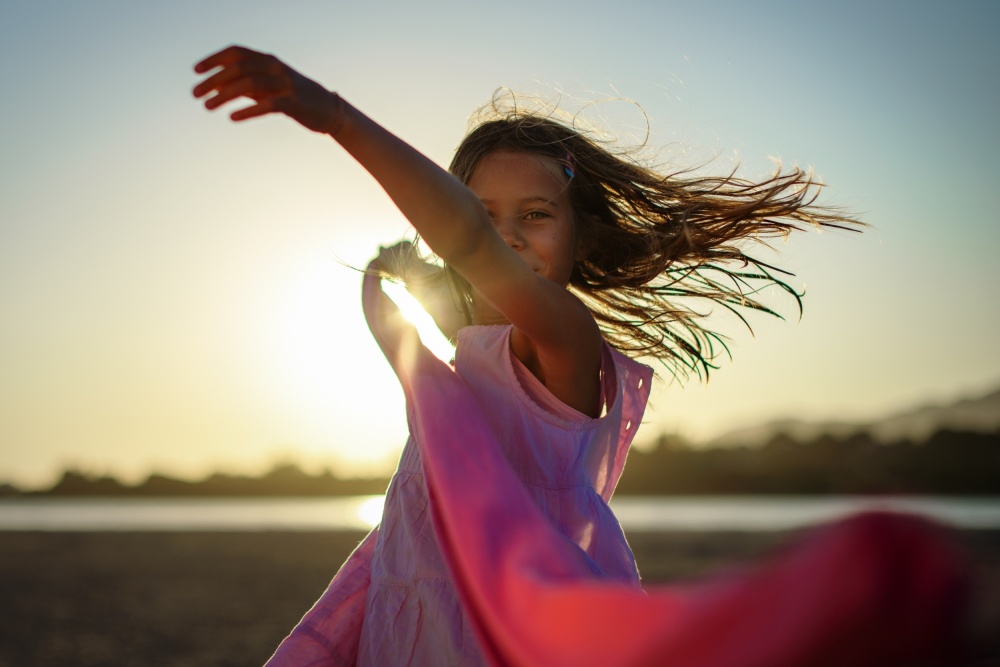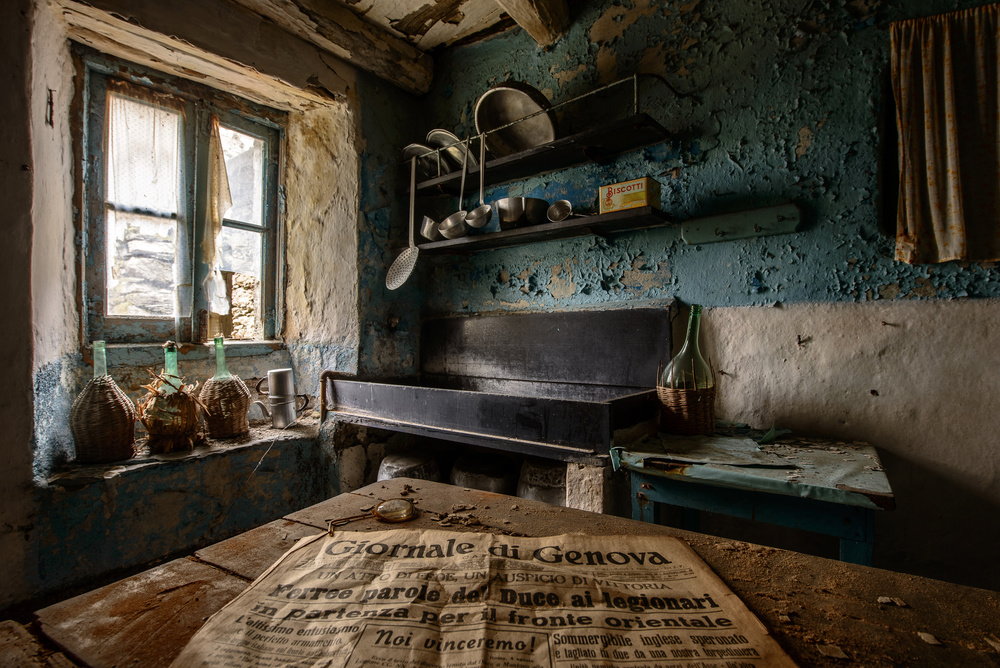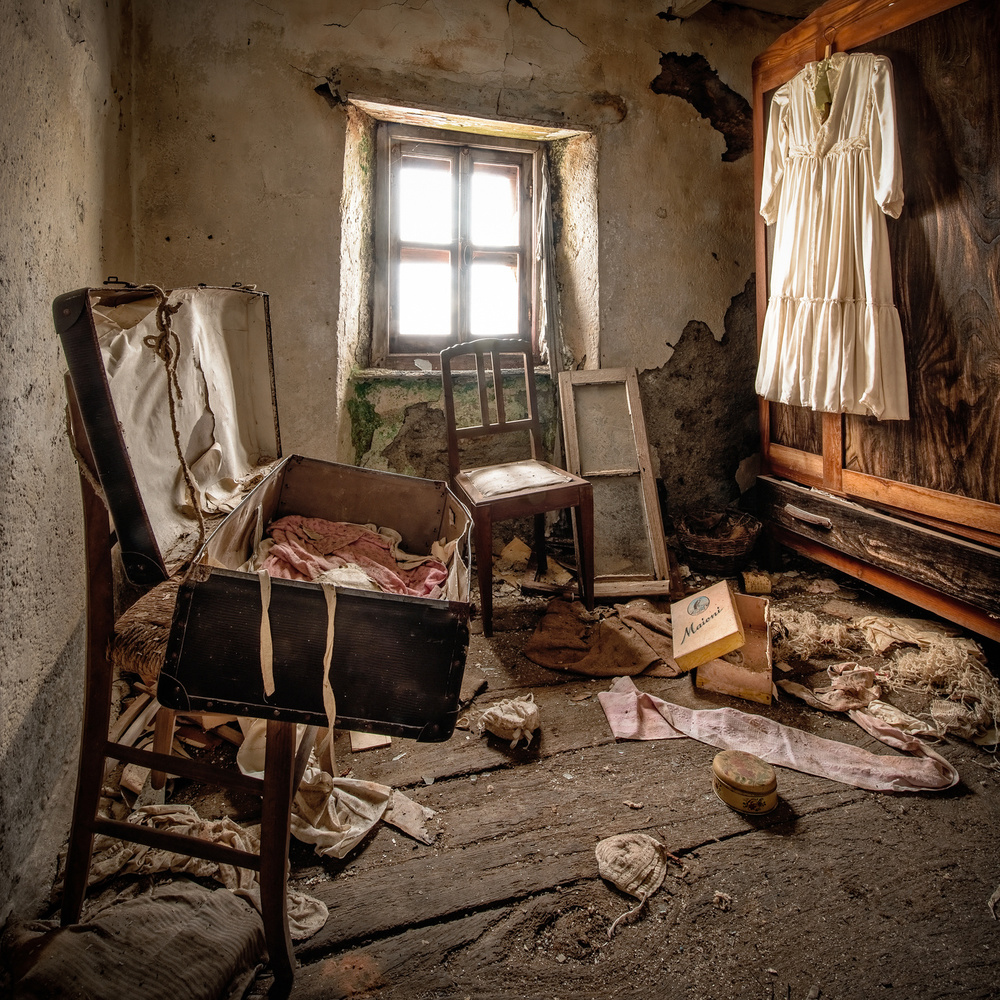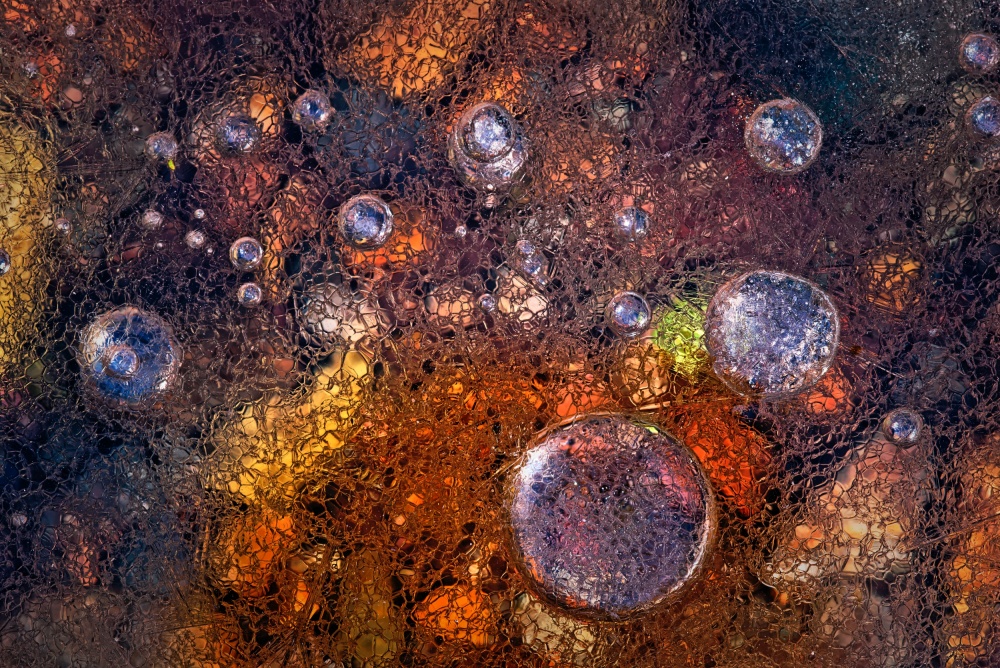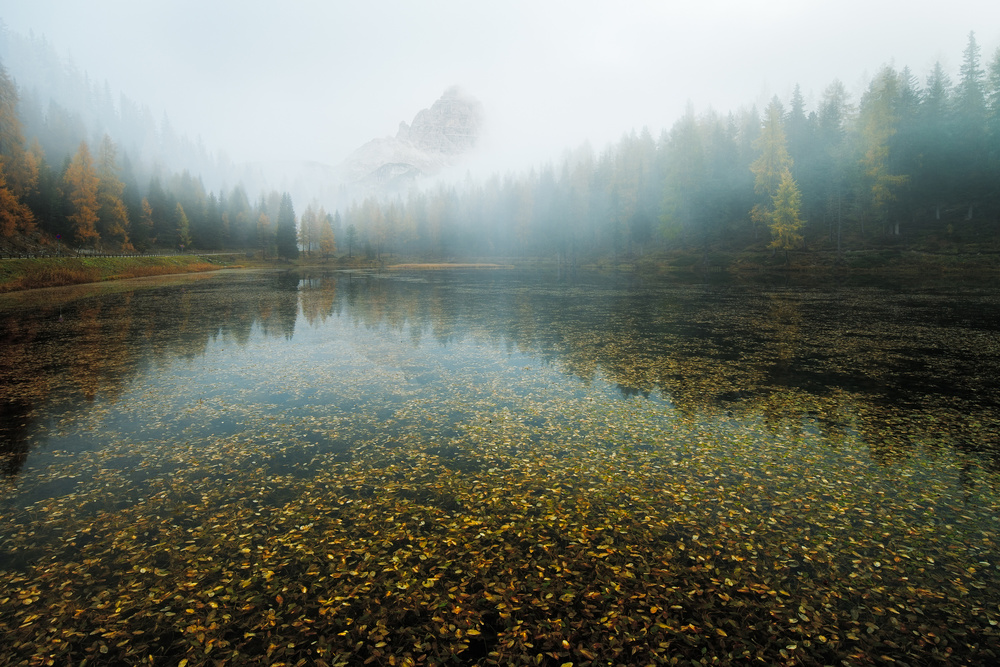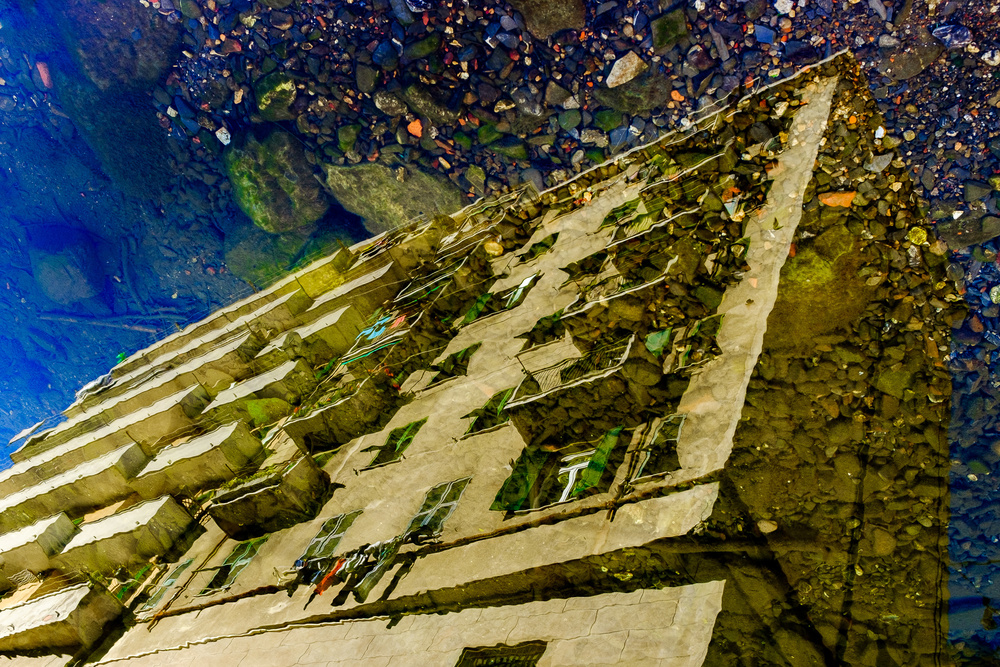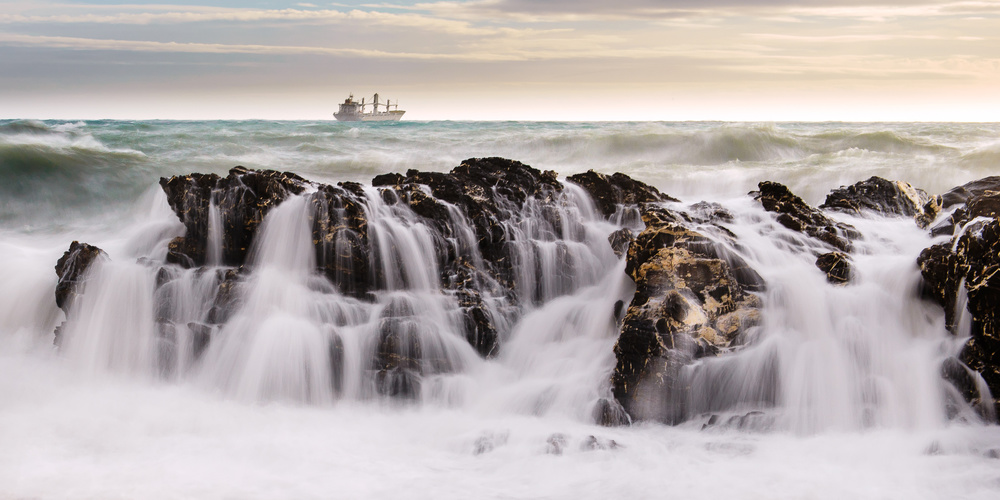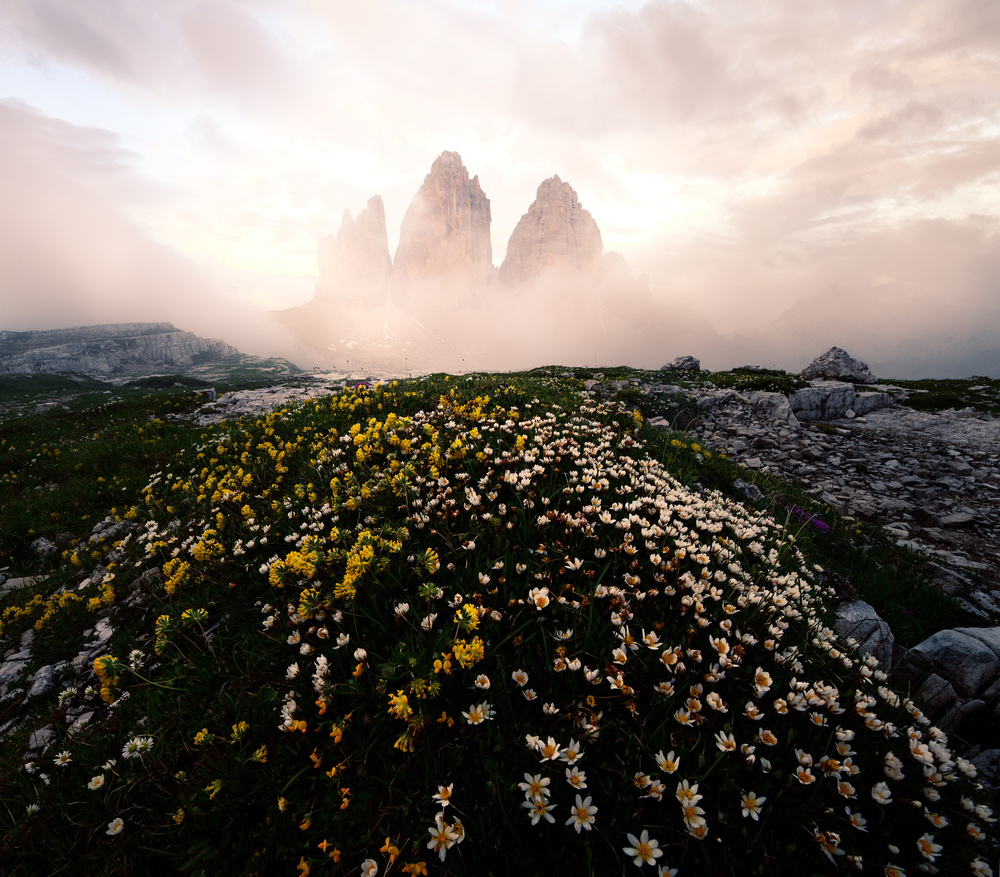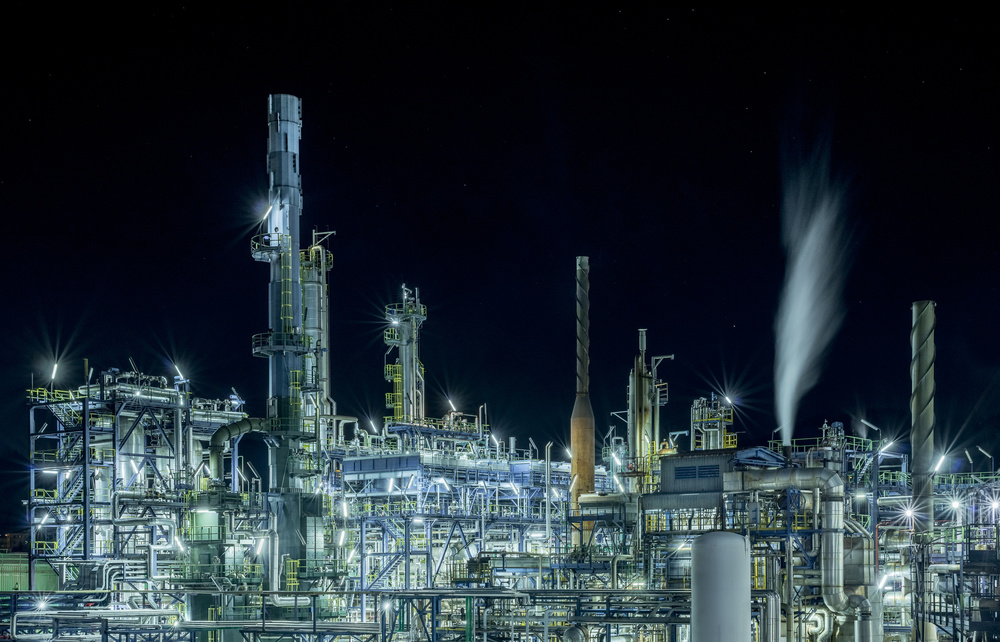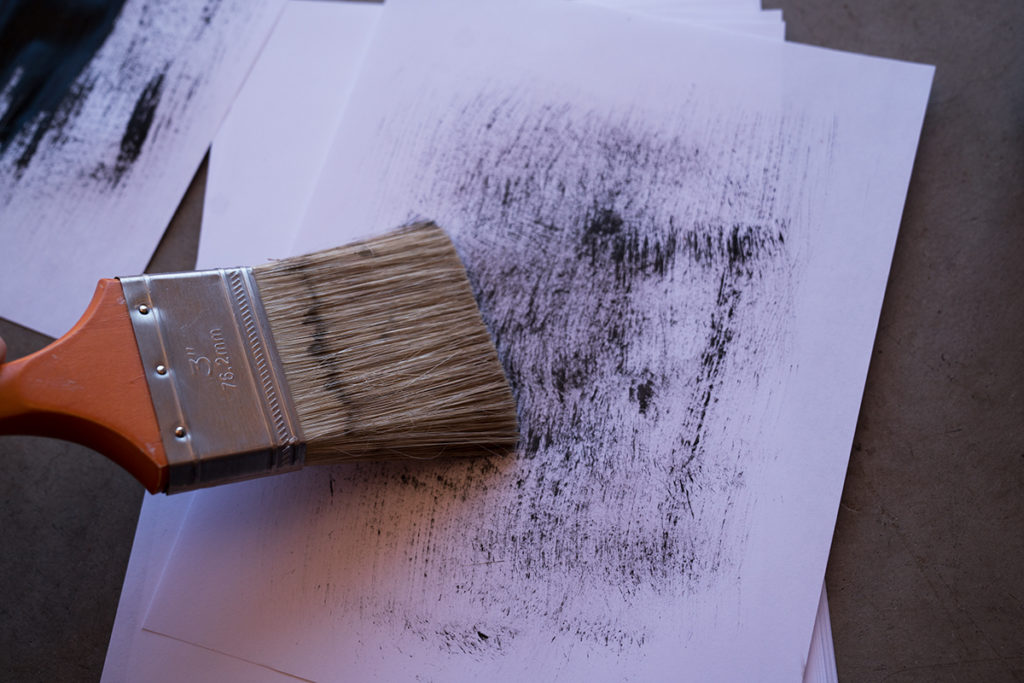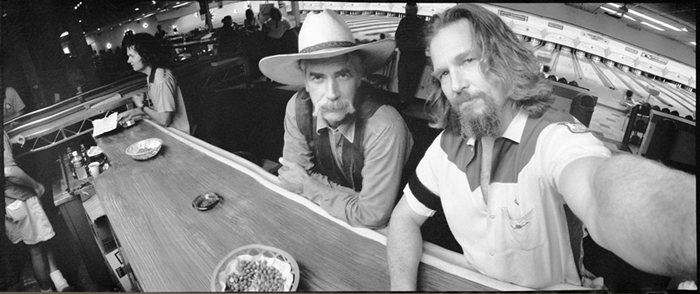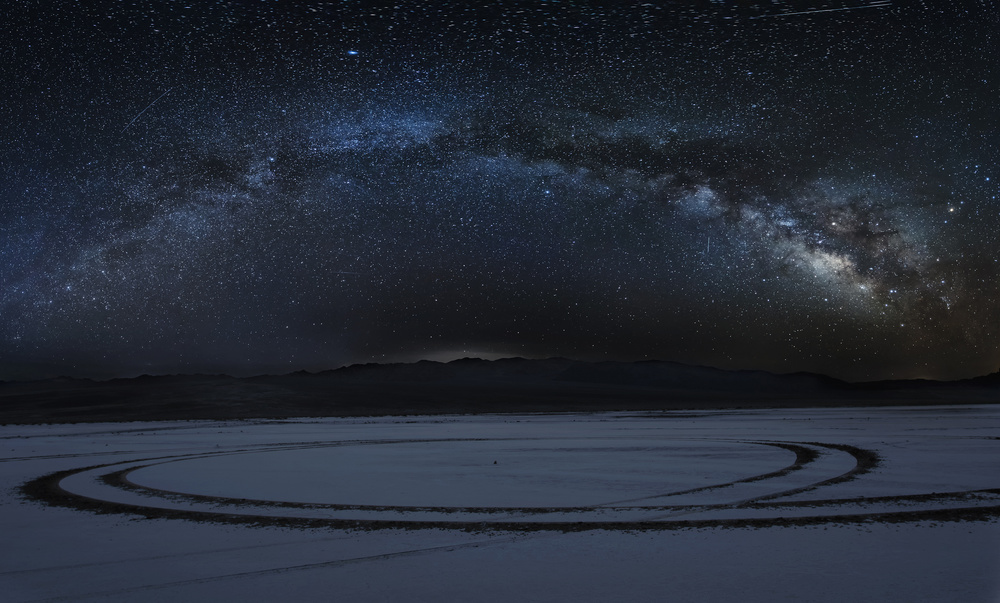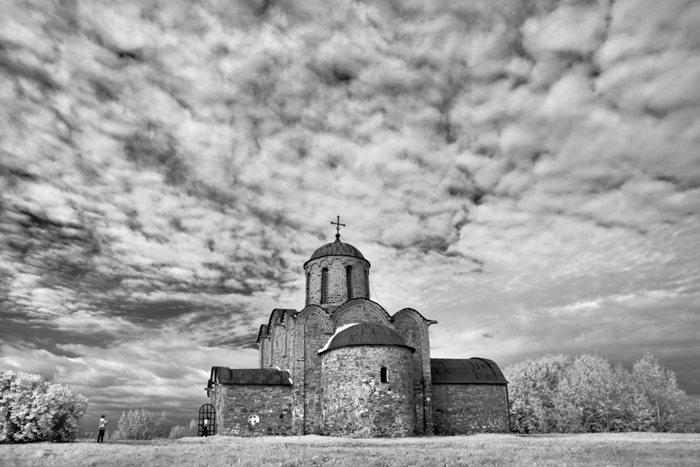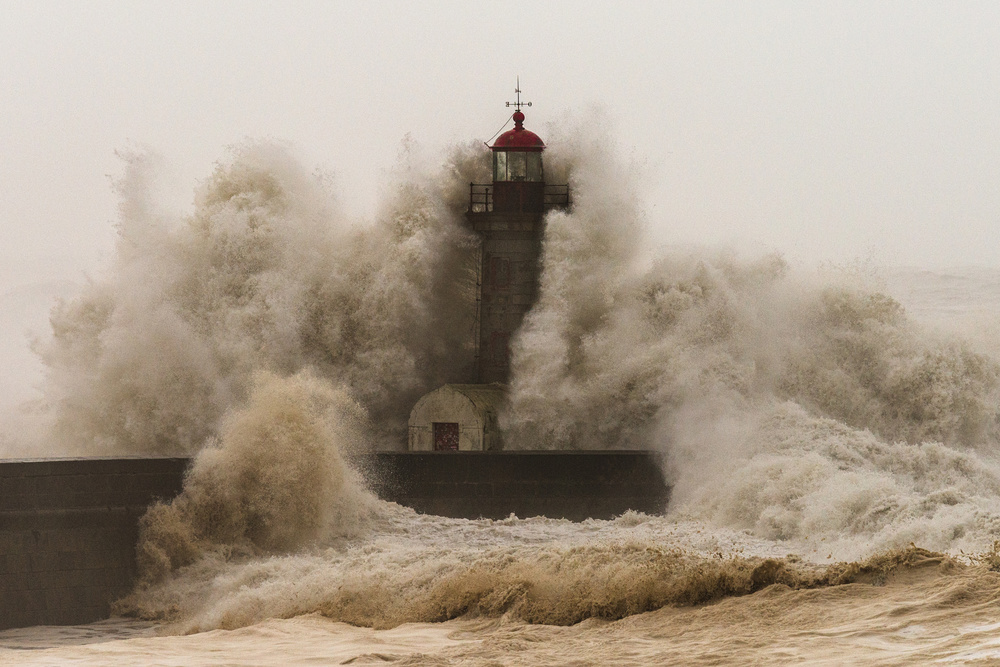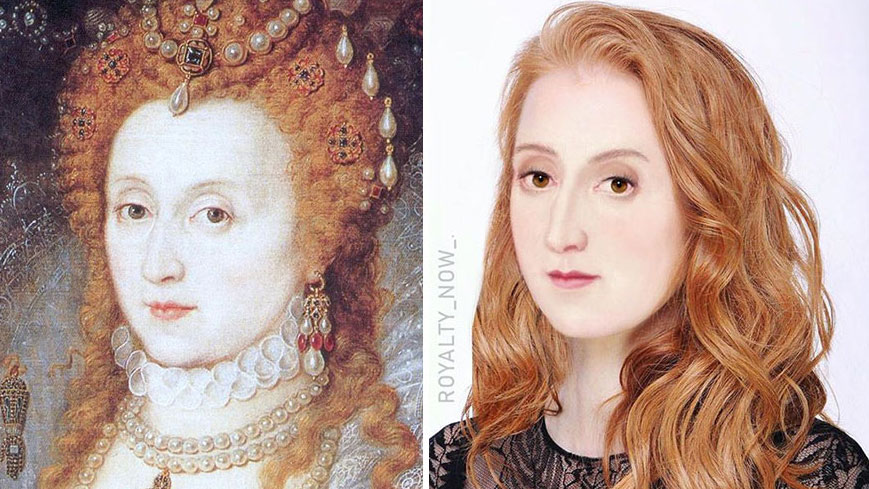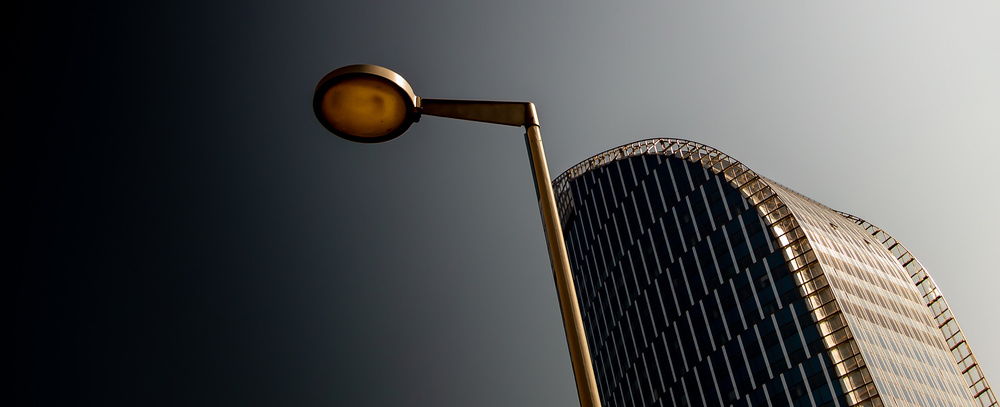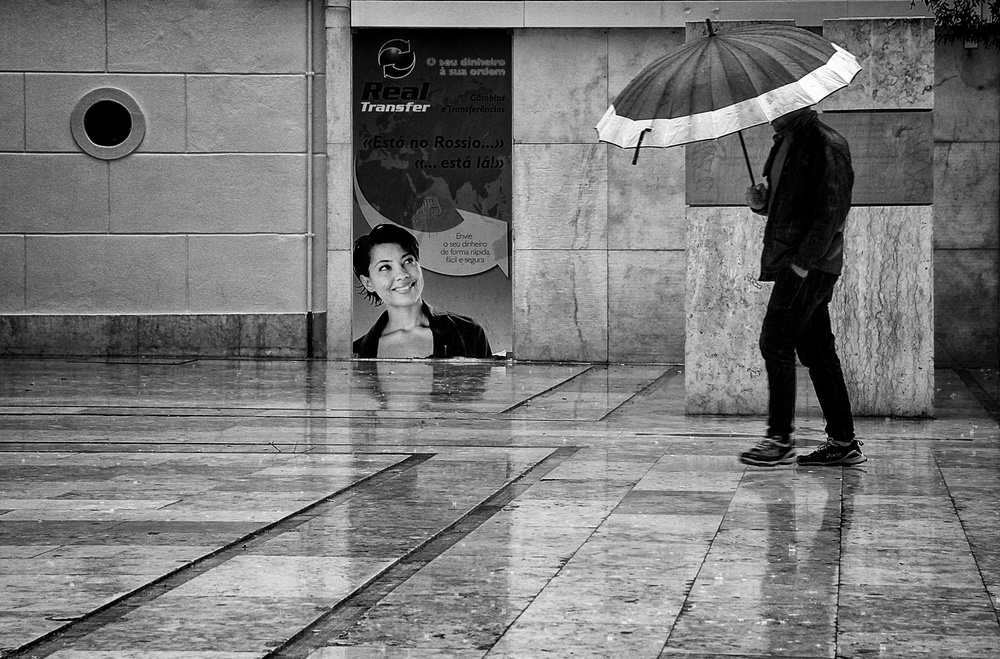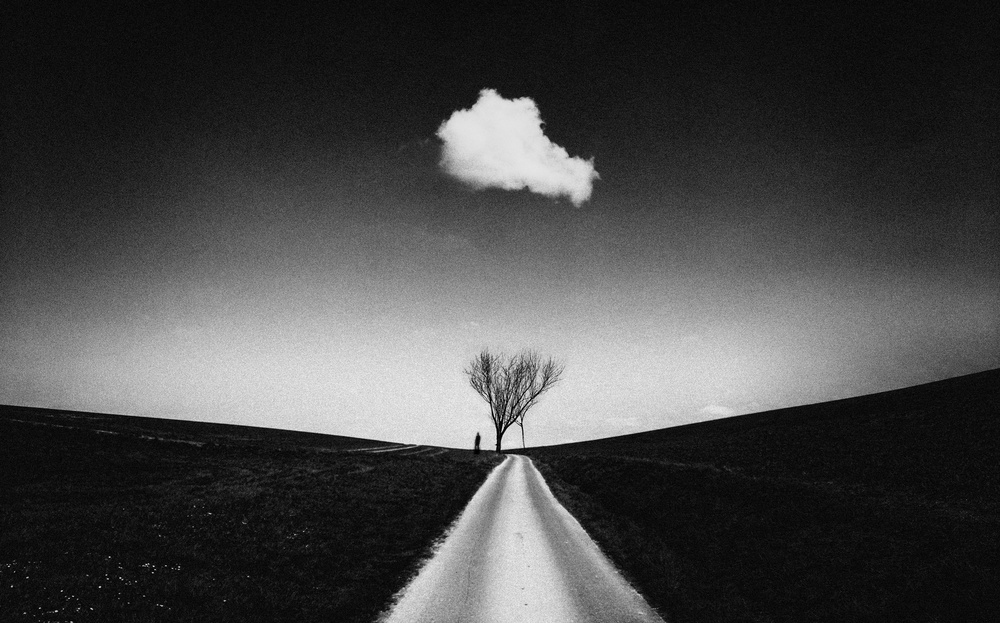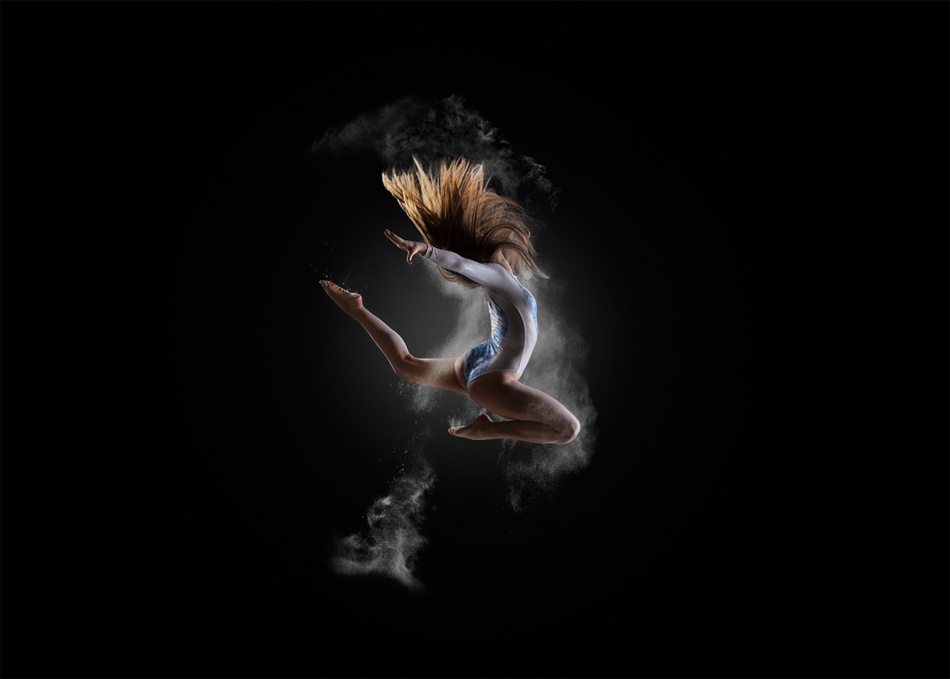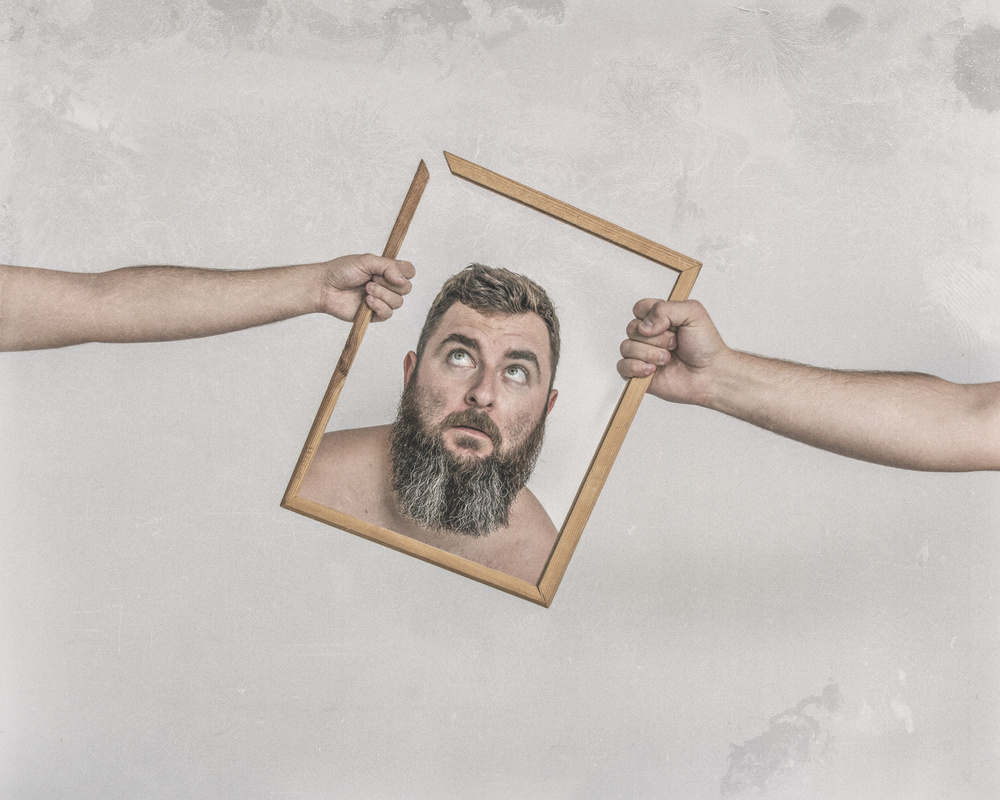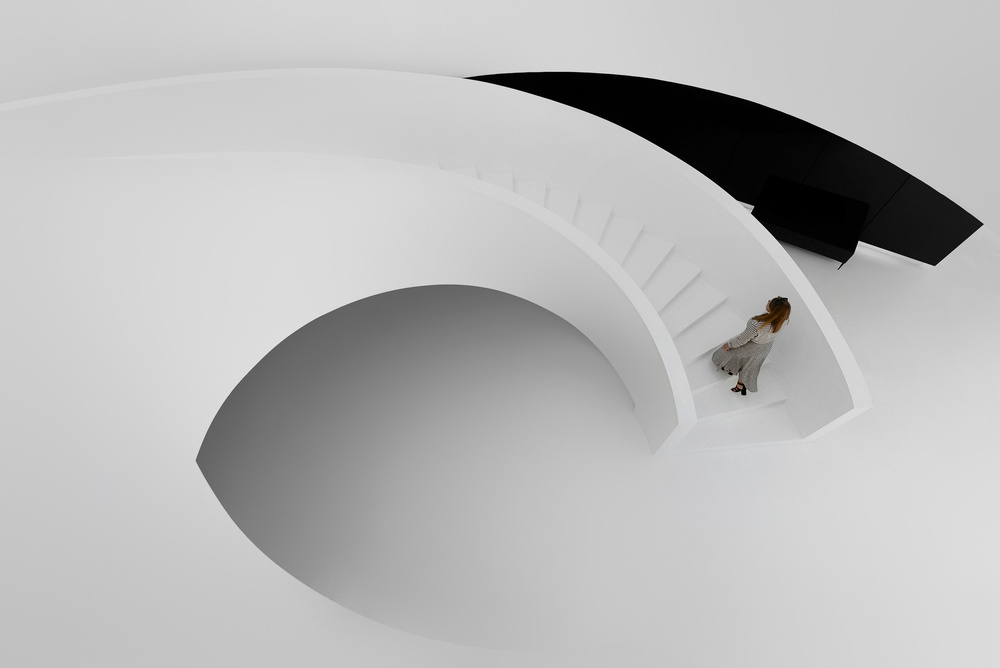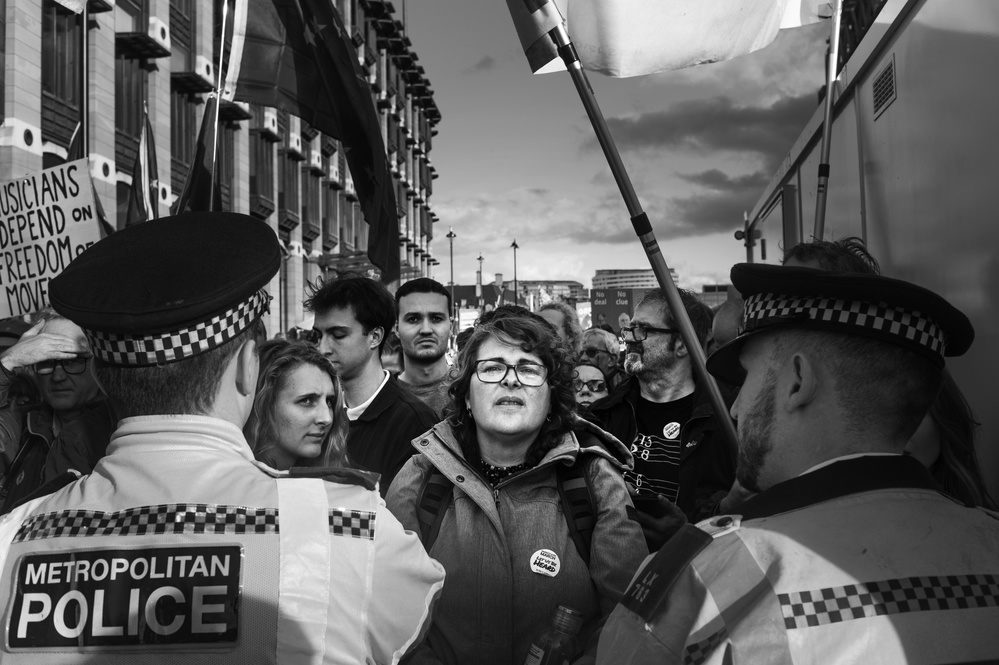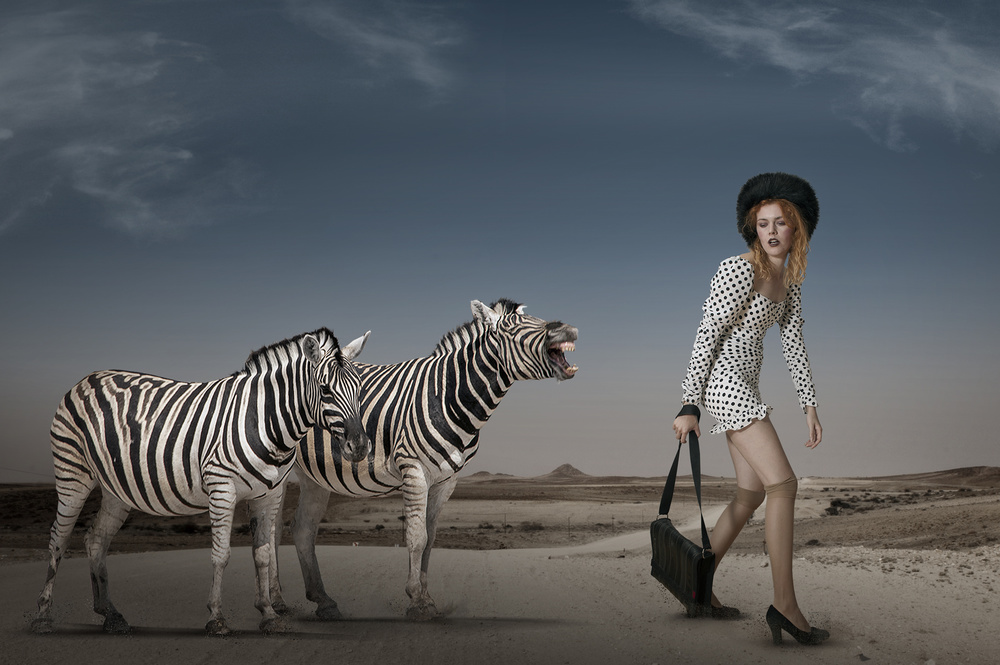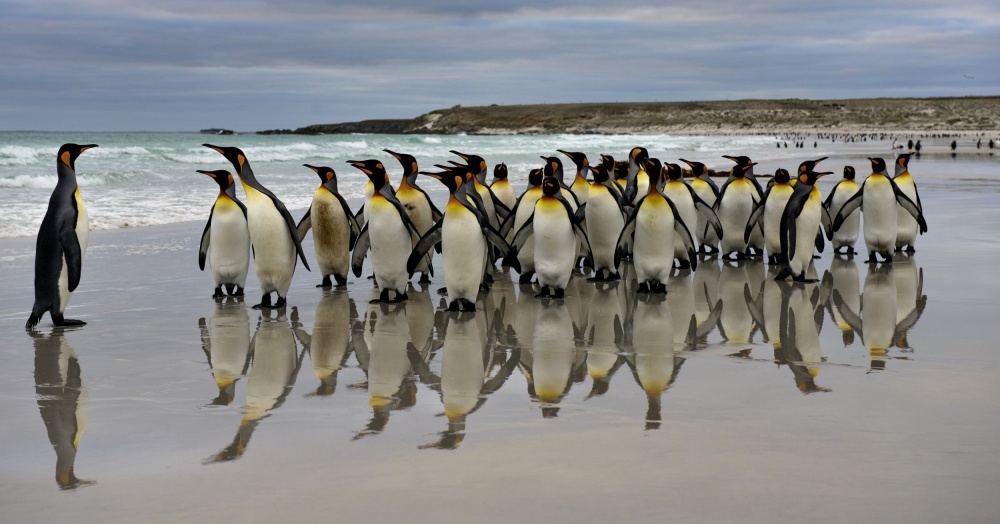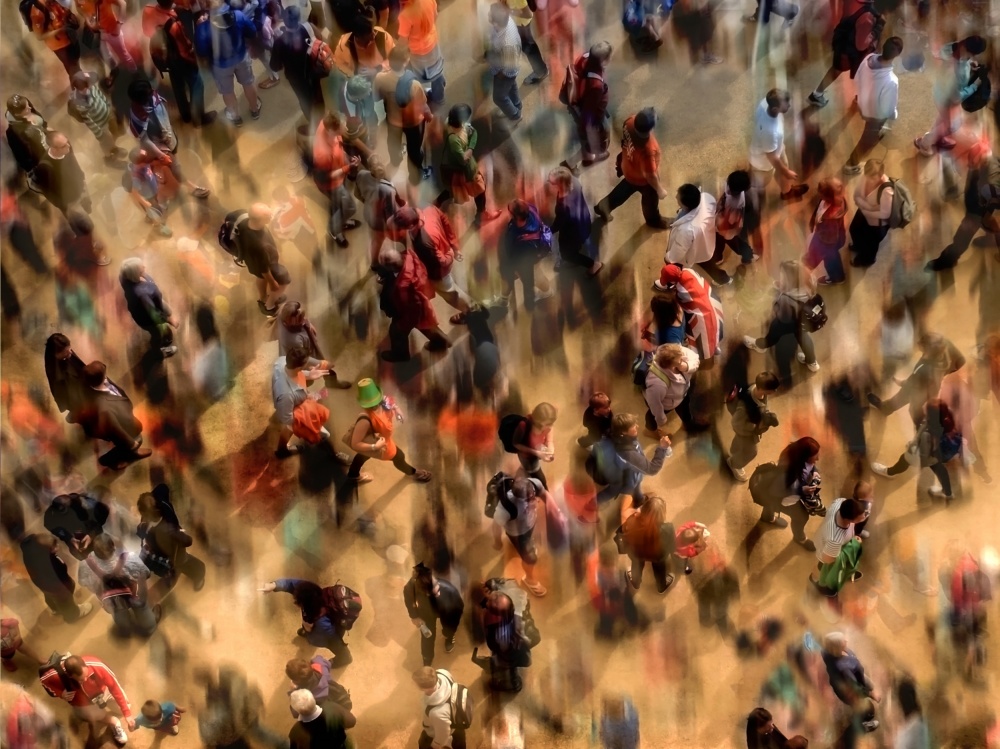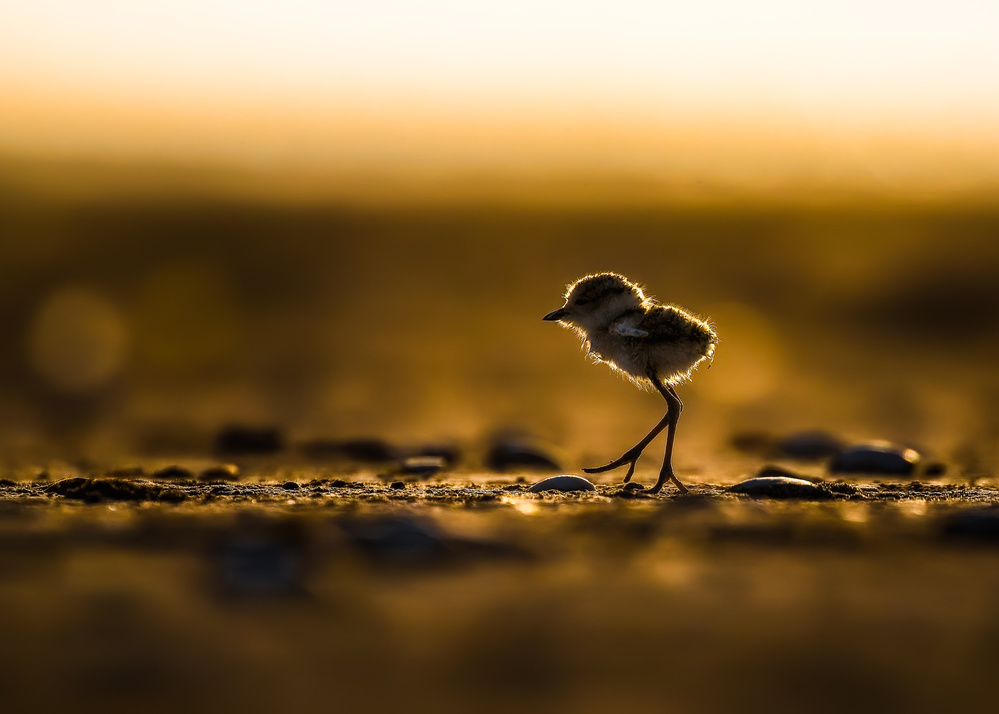Photographers
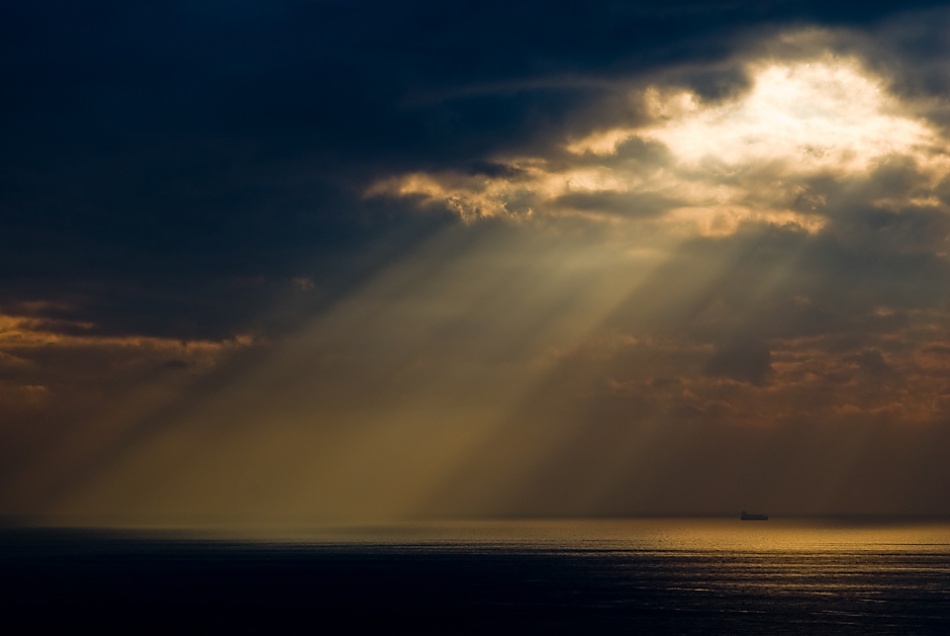
Paolo Giudici: Photographer of the week
1x Blog-PhotographersPaolo Giudici has a wide spectrum of photographic styles corresponding with different stages in his life. Whatever the subject may be, Paolo loves complex composition rather than minimalistic sceneries. He also has a preference for colour photography. Let's listen to what he has to tell us about his photographic journey through time.
Briefly tell us about yourself, your hobbies and other jobs.
I am a university professor, I research and teach business law, I am very active also at an international level and I travel really a lot for my work. I am also the partner of a law firm in Genoa. I am married since 1993 with Marina, a beautiful and super clever financial advisor who has no interest whatsoever in art. We have two grown-up sons. I am a runner and a jazz lover.
What first attracted you to photography?
I have always been fond of arts. When I was a child, I spent my time drawing leopards and other big cats and admiring pictures of wild animals on books. When I was a teenager, I started to buy magazines and literally study any photograph published in National Geographic and in a beautiful Italian nature photography magazine called “Oasis”. I still love animal pictures, but it is a genre that do not fit well with my life constraints. I admire any single animal photography published on 1x.
How has your history and life experiences affected your photography?
During the university and my following years as a young lawyer I had no time for hobbies other than jazz music – simply because I studied with music on. After the birth of my second son I decided to document my family life and bought a camera and zooms. National Geographic was still my main source of inspiration - this time for environmental portraits and reportages.
I became very good at photographing my children, but never tried portrait as a genre because I am not good at interacting with strangers. I love the great children and teens photographers that are active on 1x.
At the time during weekends and holidays I was writing my second research book. From my reading room I have a wonderful view over the Gulf of Genoa. From time to time I saw something special happening over the sea and took a picture. My first pictures on 1x document this period: my children and the view from my room.
I was helped in my development by two dear friends who are fantastic wedding photographers, Mauro and Gimmi, who have viewed and commented onall my shots.
Then my younger son got a very serious infection, which put his life at risk. He was hospitalized for two long, terrible months. This was my turning point. I decided that I did not want to grow older spending all my weekends and holidays working on law issues, and that I needed more time for myself. I was incredibly attracted by Sven Fennema’s work on 1x and shared this passion with my sons, and I started to explore Genoa’s surroundings looking for abandonment. This was the start of my project on the Genoa area.
Which are your most important experiences that has influenced your art?
With two old time friends, Franco and Gianpi, and my children Andrea and Marco (all of them are published on 1x) I attended two small workshops with professional landscape photographers and appreciated the discipline and spirit required to excel in the genre. Then at 50 I organized an exhibition of my pictures. I sold almost all my B&W pictures, less so for the colour ones, even though I sold one of my beloved colour photos to an important art collector.
I was offered to run the exhibition in other two venues and after this experience I learned at least two important things. First, that I love large prints but that they need to be technically flawless. Second, that I did not really like to have half of my pictures in B&W and the other in colours. I wanted to develop a coherent body of work, and I had to take a decision. I sold more B&W prints, and of course I love many B&W masters, but I prefer colour landscape or decay pictures, so the decision was taken: colour.
As in my studies and my profession, I am a researcher, and I am very passionate and disciplined, so I continued to study techniques and pursue my project concerning Genoa’s surroundings as much as I could during my weekends. My two photo peers were attending workshops abroad but I did not join them because I wanted to stick to my plan and at the same time stay close to Marina. I also started my dedicated website at www.paologiudici.it
Given your life constraints, when do you take photos?
I take pictures during weekends, never during holidays – of course I spend summer holidays with my wife and Marina does not like my tripod, she wants all attentions for her at least in August. Therefore, 3 days is the maximum time span that I have dedicated to photography expeditions until now – but I am opening negotiations on this issue at home.
My family lives in Genoa, where I spend my weekends, but I teach and do research in Bolzano, very close to the Italian Dolomites. Thus, with my photo peers we struck a deal: I was not joining them in their tours to Scotland or Iceland but I would spend with them some days out in the Dolomites. I have therefore recently relaxed a little bit my self-built territorial constraints and have somehow extended the area of my photographic activity.
Describe your overall photographic vision.
I love complex compositions, I do not like minimalist scenes. I love to organize chaos in my viewfinder. “Kaos” by Koudelka was my epiphany. It is the best photographic book I own, my source of inspiration. All pictures are panos taken with an Hasselblad Xpan. Any photo is a masterpiece of complexity management.
I also love photos that require some “reading” and lateral thinking.
I firmly believe that the absence of an immediate starting point or easy-to-find centre of interest can create ambiguity and thus intellectual engagement. Of course, it raises the difficulty level. It is like some free jazz. If it is good, it is very good, otherwise it is crap.
What is more important to you, the mood/story behind your images or the technical perfection?
Mood and story are important but rhetoric is the risk – I owe this to a friend who runs an art gallery and destroyed my first exhibition by noting that almost all my pictures, especially the B&W ones, were excessively rhetorical.
As to technical perfection, it is essential but it must go hands in hands with creativity.
You have your very own style but your work is very diversified. Can you explain why this is?
The differences simply witness different stages of my life. Since I am passionate about studying techniques, the differences also witness different experiments that I took in order to understand what I wanted to become. Time constraints and personality limitations (no ability to interact with strangers) draw me where I am now.
What generally is your relationship to your subject matter beyond being an observer? Do you prepare carefully the locations where you are intending to photograph?
In the course of the years my approach has changed. Today I return to my locations, physically or in my mind before sleeping (I am not joking) in order to prepare the shot and test the composition. I have a very strong relationship with the subjects, which are all very close to where I live, either in Genoa or Bolzano, and I prepare all my local explorations in detail. For instance, I had visited this rock formation at least 3 or 4 times before returning to it during a storm, this time knowing exactly how to move among crushing waves and how to frame the shot.
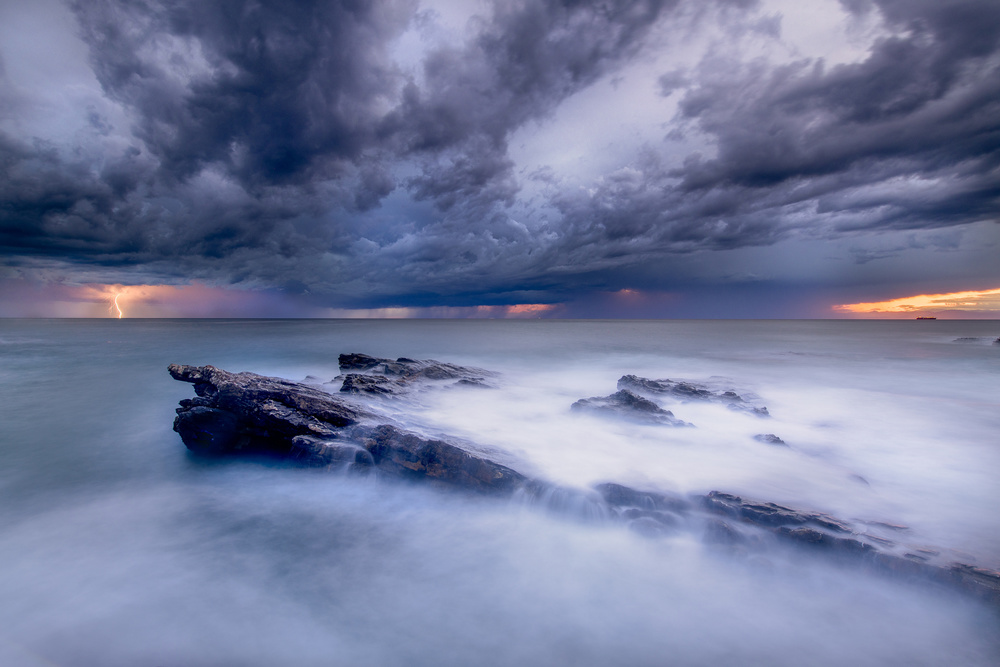 'Golfo di Genova (End of Summer)
'Golfo di Genova (End of Summer)
In this place, however, I recently had a very bad experience, because I was caught by a rogue wave. I was too confident about my knowledge of the sea, and the sea reminded me that it is a dangerous beast.
Another example, always concerning the sea. I had observed many times the shape of waves on this rock before returning to it during a much-awaited sea storm in order to take precisely this picture.
In short, I have a map of places around me where I know I have to return when the conditions are favourable. My map, well my two maps, are local but not small because they comprise anything at a 90 minutes’ drive from home (Genoa or Bolzano), and incredibly detailed, since I can remember any country road, any single bend, any rock formation, any tree and any house that I have seen during my previous explorations.
What gear do you use (camera, lenses, bag)?
If I were a professional landscape and cityscape photographer, I would have a technical camera. I hope Alpa Camera one day will feel sympathy for this strange visitor from Italy that returns night after night to their website but who is not in clients’ list, and decide to discount their equipment or, even better, sponsor him! And that Arca Swiss, Linhof and the likes will react to this competitive challenge.
But till that future moment what is your second-best option?
Tilt & shift lenses. I have studied and tested extensively Scheimpflug lens tilt.
I also love the pano possibility that T&S lenses offer. I use horizontal panos (going up and down with the shifted lens) for focus control more than for pixel extension. I have 3 Nikon tilt and shift lenses (19, 24 and 45). I could live exclusively with the 24 and the 45, but the 19 is in another category since it can tilt in any direction when shifted (like Canon T&S lenses). I bought the D850 mainly because the split screen option and the wonderful viewfinder greatly facilitate precision in tilting the focus plane. Those lenses force you to work with manual settings and very slowly. I also have an Arca Swiss Cube, since it is too demanding to use T&S lenses with a normal tripod head. All this gear is expensive but is incredibly cheap if compared to a technical camera with a digital back and two good Rodenstock or Schneider lenses.
In addition, I want lenses that have a perfect control of flares during night shots, and therefore I have a Nikon 50 1.4 and a Nikon 58 1.4 as well. I read nonsensical reviews concerning those lenses. Maybe they are not top-notch in terms of sharpness, but their flare control is fantastic and at f 5.6of f 8 lenses’ sharpness is undistinguishable. I really cannot believe that so many photographers talk so much about lens sharpness but have no clue that an average T&S lens properly tilted produce a landscape image that is all perfectly sharp simply because everything is in focus – a result impossible to achieve with the best lens of the world in hyperfocal at f 8 or 11 or even 16 (where maybe you also start to see diffraction).
Thus, I have virtually abandoned my zoom lenses except the Nikon 14-24, which I use for seascapes since I do not want to put at risk my Nikon 19 PCE. Well, I should have said I used, because I have recently lost it with my D850.
What happened?
The last day of November at sunset I was taken by a rogue wave while photographing the sea on a rock formation in the Genoa Riviera, a place where I used to swim when I was young and that I know really well. I suddenly found myself in rough sea fully dressed and with nobody around me for help, and it was frightful. I was able to get out of the water because of my knowledge of the place, but it was not easy. I have lost the camera and my 14-24 mm. The day after - a bleak, cold and rainy December 1 - I returned in the early morning to the same place with a friend, I dived into the cold water and recovered the tripod and the Arca Swiss Cube, 3 mts below the surface. I do not know yet if I can save them from the destructive action of salt water.
Luckily, I was in the Mediterranean and not in the Atlantic, in a familiar place and not in an unknown shore. It was a frightful experience nevertheless – I will never forget it. I was totally caught by surprise. Photography has also an adventurous component, for me at least. But this frightening experience has taught me a lot about winter seascape photography and going alone to take photos in places where there is some amount of risk involved.
Very frightening indeed. What software do you use to process your images?
Adobe Lightroom. If necessary, I use PS. I have bought some online courses and I am becoming sufficiently proficient with PS, but in the end, I think that Lightroom in its current edition offers 95% of what I need.
Can you tell us something more about your work flow?
When taking pictures, I decide my position without even trying to test it with the camera’s viewfinder. I mount the tripod, put the camera in with the chosen lens and start my tilt & shift procedures for focus optimization. With time and experience I am reducing the number of shots. I take the pictures from one or two positions, no more - if you are serious about tilt and shift it is really like working with a technical camera, you have to take decisions.
As to software, there is nothing special, except that almost half of my pictures are panos, so the pano facility in Lightroom is usually my starting point. I choose the pictures, use the camera landscape profile, reduce the blacks, reduce the lights, and start with a few local adjustments when needed. I rarely use graduated filters so I use quite a lot Lightroom’s graduated one. From time to time I use Lightroom HDR in night shots, and therefore I have HDR pano shots, which means that a single image can require 9 different pictures (3 shifted shots with 3 brackets each). Of course, I love the new HDR+Pano merging tool in Lightroom.
What is your most important advice to a beginner in Photography and how do you get started?
I would say study and practice. Study photography and visual arts, study and practice techniques, master your camera and your lenses. If it rains, practice at home with hyperfocal, flashes, commands, and editing. You must be able to use your camera in any situation and in any environmental condition, and to sort out problems instantly. You must be able to control your camera in the dark, like elite soldiers do with guns.
Even more important, choose your composition before taking the camera in your hands. Do not compose with your eyes into the viewfinder or the display, because you will be tempted to use your zoom and not your physical position to choose the composition and this is – in my opinion – the most common source of failure.
Who are your favourite photographers and more importantly, how has your appreciation of their work affected how you approach your own photography?
Josef Koudelka, Mimmo Jodice and Luca Campigotto, an Italian master of sublime cityscapes. All these photographers love to manage complex and crowded environments in their compositions, therefore their influence on me has been enormous. I also adore the work of Candida Höfer and the other members of the Dusseldorf School.
I mentioned already Sven Fennema, who was on 1x. I also bought some of Joe McNally’s books because if I started with portraits, I would really like to master remote flashes - I love McNally’s environmental portraits, packed with details and colours, and I regularly follow his blog.
Is there any specific photo taken by another photographer that has inspired you a lot and why?
There are too many, but I would say any single picture that I know taken by Koudelka and Campigotto, and many taken by Fennema. There was one on 1x titled “Walls of wine” that produced on me and my children a great impression:
Are there any specific directions that you would like to take your photography in the future or any specific goals that you wish to achieve?
It is my intention to start a project on Sardinia’s seascapes. From Genoa it takes one night on a ferry to be in Sardinia, and I can go there for a few days without staying too much away from Marina. This is also a polemical reaction to my friends’ efforts to convince me to go to Iceland or Scotland. Nothing against those destinations, but I am a local, Mediterranean photographer, and my bet is that Sardinia’s sea coast can be as impressive as Iceland’s one. But I will not take any risk whatsoever this time!
Describe your favourite photograph taken by you and why it is special to you?
Any picture is like a child. You remember any moment of its birth. Maybe the photo that shocked me more at its birth was the “Cosmic Driller”. The refinery looked immediately like a glass edifice on my camera’s display.
When back at home I also discovered that there were some stars in the dark sky – an unexpected bonus. I was really happy. I had prepared the shot carefully and I had followed the weather forecast every weekend to choose when to go. The right day I went: half an hour by car, 90 minutes on site, back home to have dinner and watch a French film with Marina. That picture represents my quintessential photographic Saturday.
Is there anything else you wish to add and what do you think about 1X as a home base for your work?
1x is a wonderful place because there are amazing photographers and anybody is forced to push the envelope further. It is also very easy to use; you can have a feedback on your pictures very quickly by checking their popularity in screening. My photographic progression has been driven mainly by 1x. Of course, life is not easy on a gallery where, to name a few, Marsel van Oosten or Marc Adamus publish some of their works.
Like any other gallery, 1x has its own aesthetic. This aesthetic is very Nordic and mood here is very important, with all the risks that I have already mentioned – rhetoric and clichés. There are clichés that are loved by the curators, the most remarkable to me is the genre of the B&W picture with a small silhouette of a human being walking away, or the portrait behind the broken glass of a window. You do not see those pictures in art galleries. But I would be curious to know how those pictures sell on the web.
Pushed by a friend to enlarge my ambitions, this year I started to participate to some photo contests. I won two honourable mention, one in Siena at SIPA 2019 with an industrial picture that has not been published on 1x, and the other at IPA 2019 with “Tre Cime Revealed”. I also won a small but well participated Italian competition with another picture that was not published on 1x.
So, I love 1x but I seek to manage this love with consciousness.
. '

